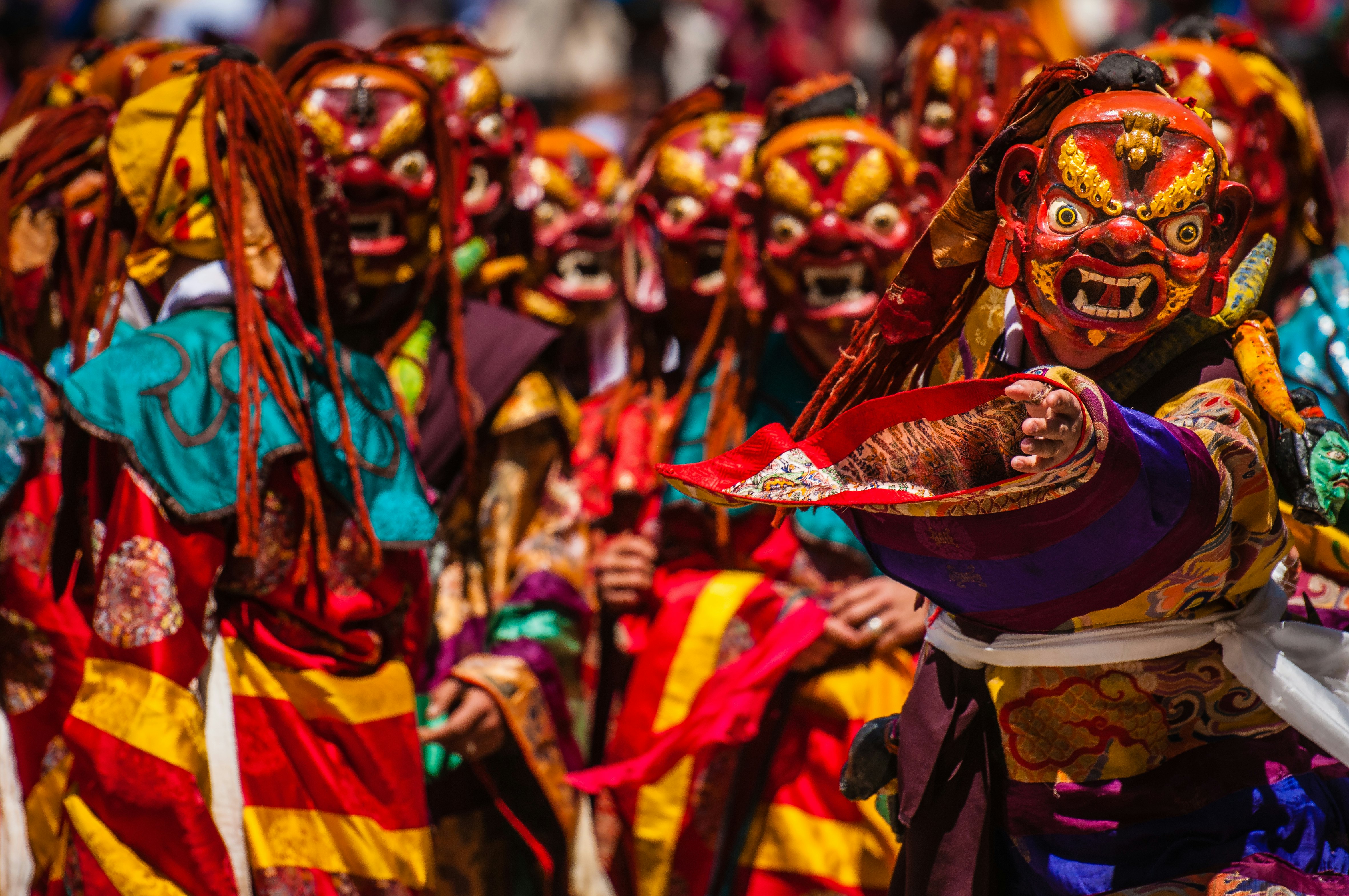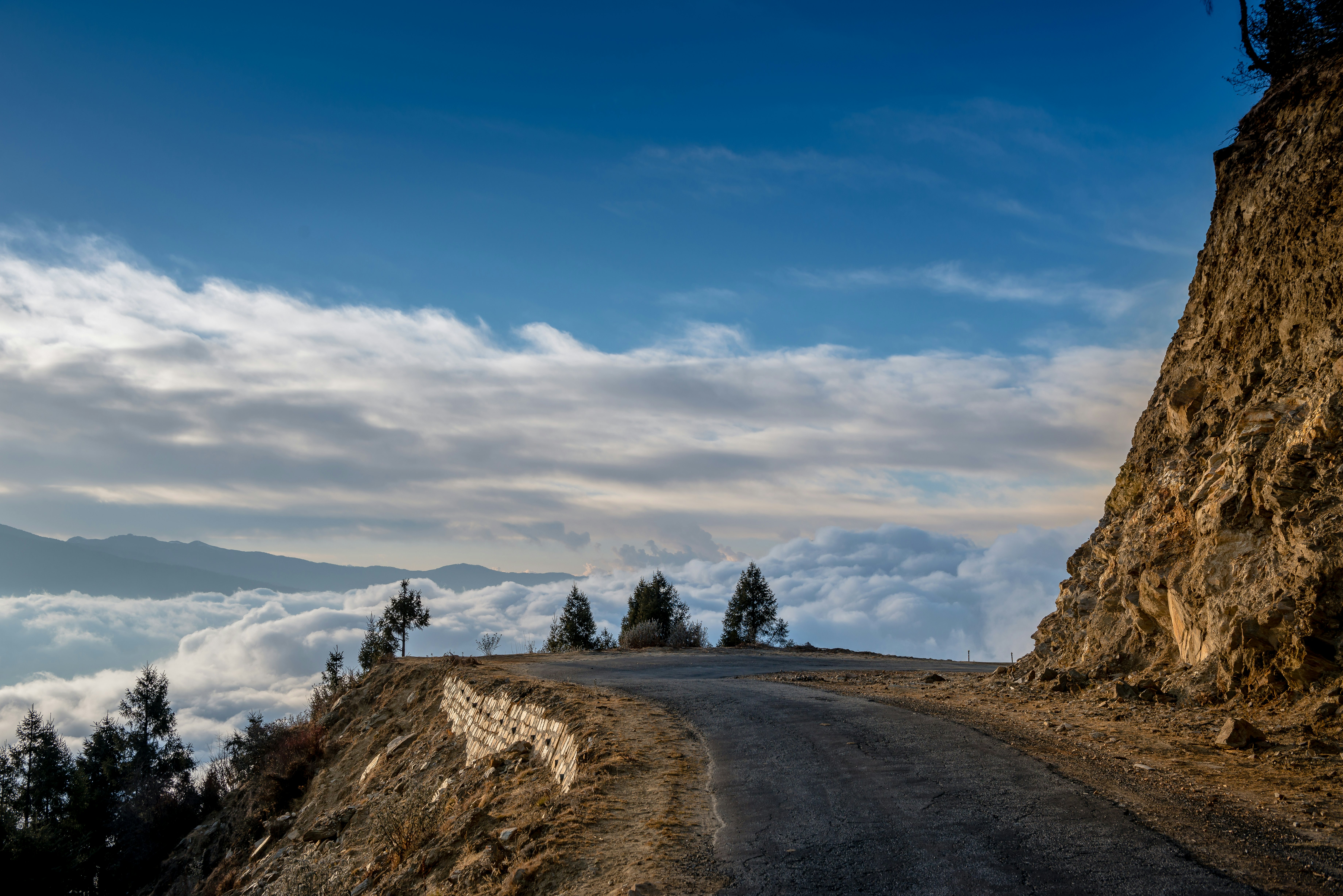
Dec 17, 20196 min read
Joining the bikers of Gilgit-Baltistan: exploring Northern Pakistan by motorcycle
At the top of Cheli La, the views are gorgeous and the prayer flags many © Saud A Faisal / Getty Images
A road trip through the remote, stunningly beautiful Himalayan valleys of Bhutan ranks as one of travel’s most exciting adventures.
Whether sticking to the more popular western valleys on a lightning trip or driving for days over wild passes through the remote east, the landscapes here are pristine and the traditional culture famously intact.
Paro airport in the west of the country is the main entry point for most foreign visitors, which also makes it the starting-off point for most every road-tripper. You’ll need more time to visit the remote center and east of the country, though domestic flights can open up these little-visited corners.
It’s worth knowing that self-driving is not an option for most visitors. While it is possible to sign up for a motorcycle tour of Bhutan, and Indian citizens in particular can drive their cars into Bhutan by paying of a daily fee, the vast majority of foreign tourists have to arrange a vehicle and driver for their tour.
Which means you can sit back and enjoy the stunning views.

The best trip for a first-time visitor to Bhutan
Paro–Thimphu–Paro; 95km (60 miles); four days
After flying into Bhutan’s international airport at Paro, spend the rest of the day visiting the Paro dzong (fortress-monastery) and nearby National Museum, from where you can shake off the flight with a short hike to Zuri Dzong for a fine overview of the valley.
The next day’s drive to Thimphu is only 47km (29 miles) on one of the country’s best roads – still, it’s worth taking your time, stopping en route at the deliciously fragrant Tshenden incense workshop and the roadside Tamchog Lhakhang, home to an amazing iron-link bridge built by the 15th-century Tibetan saint Tangtong Gyelpo. Our favorite place en route for a home-cooked Bhutanese lunch is the centuries-old Sisichhum Heritage Home.
Just before you get to Thimphu pay your respects to the 51m(167ft)-tall Buddha Dordenma statue that guards the entrance to the valley. With enough time, you might even consider hiking the last hour along forested valley walls to reach Thimphu on foot. Once in town, spend the rest of the day enjoying the country’s best museums, craft workshops and retailers, some of which feature Bhutan’s most cutting-edge designers.
On day three, make the afternoon drive back to Paro; the next morning, make the half-day hike up to Bhutan’s most famous sight, the iconic Taktshang Goemba (Tiger’s Nest Monastery), stuck like a limpet high on granite cliffs in the upper valley. Finish your quick intro to Bhutan with a craft-beer tasting at the Namgyal Artisanal Brewery, or a restorative soak in a traditional herb-filled hot-stone bath.
Expect four perfect days in a one-of-a-kind country.
Detour: To really get off the beaten track, branch 4km (2.5 miles) off the main Paro–Thimphu road at Shaba to join pilgrims on a clockwise walk around the miracle-working and sin-absolving caves, rocks and shrines of Drak Kharpo monastery.

Best for Himalayan views and Trans Bhutan Trail hiking
Thimphu–Punakha: 71km (44 miles); half a day
The road west of the capital Thimphu passes strategic Simtokha Dzong before snaking up through old-growth forest to the 3140m (10,3000ft) Dochu La, perched atop the red-and-pink rhododendron forests of the Royal Botanical Park. Arriving at the pass just after dawn gives you the best chance of a Himalayan panorama that includes 7570m (24,836ft) Gangkhar Puensum, the world’s highest unclimbed peak. Grab a cup of coffee from the cafe and soak in views framed by the photogenic collection of 108 memorial stupas.
On the eastern side of the pass, the road drops like a stone through forests of blue pine and hemlock, leading to Chimi Lhakhang temple. This complex was established in honor of Lama Drukpa Kunley, the outrageous “Divine Madman” whose exuberant phallus decorates houses across Bhutan.
From there, it’s a short drive to Punakha Dzong, Bhutan’s most sublimely beautiful building. En route, be sure to avoid the sacred boulder that sits slap bang in the middle of the highway – a fine example of how road safety in Bhutan is concerned as much with the spiritual as it is the physical.
Detour: The 400km(250-mile)-long Trans Bhutan Trail shadows the main road on either side of the Dochu La – and it’s well worth walking a section of the recently restored foot trail. Our favorite leg is the hour-long downhill ramble from the pass to the Ser Bhum Brewery, one of Bhutan’s three craft-beer microbreweries, where you can toast the trail with a Bhutan Glory amber ale.

Best for remote Himalayan valleys
Punakha–Gasa; 61km (38 miles); one day
Most of Bhutan’s roads run east to west over a spiraling series of ridge-top passes. Yet a few run north to south, along ancient trails to and from Tibet – and one of the most interesting of these is the paved road north of Punakha. The route follows the Mo Chu river past royal palaces and five-star resorts to reach the Khamsum Yuelley Namgyal Chorten, a modern, 30m(98ft)-tall stupa that serves to protect the country. Accordingly, it is stuffed to the brim with wrathful protectors and demons, some riding snow lions and one even riding a yeti.
Past Tashithang village (get out of the car to soak up the birdsong) a final climb takes you to Gasa’s dramatic Tashi Thongmoen Dzong, a 17th-century fort that played an important part in the arrival of Bhutan’s founding father, the Zhabdrung, from his homeland in Tibet. In March, the Gasa tsechu festival draws locals from miles around for three days of spectacular masked dances.
Finally, relax in the therapeutic waters of Gasa’s famous riverside tsa chhu (hot springs) before heading back to Punakha.
Planning tip: Recent road improvements mean that it’s now possible to extend the drive north to within just a couple of hours’ walk of Laya, opening up an adventurous three day road-trip option to this once-remote Himalayan valley.

Best road trip for fans of high altitudes
Paro–Cheli La; 40km (25 miles); half a day
If you have limited time, it’s possible to do a day trip from Paro up to the chilly heights of the Cheli La, Bhutan’s highest motorable road (3810m / 12,500ft). The switchbacking mountain road zigzags up the steep hillside past sacred springs and colorful rock paintings of the Himalayan saint Guru Rinpoche. (Keep in mind that If it’s raining in Paro valley, it’s likely snowing atop the pass.)
As you crest the pass, join your guide in crying out “lha-gey lu” (“may the gods be victorious!”), before stopping to explore the thousands of wind-whipped prayer flags that cover the ridge here. Hiking trails wind further along the ridgeline toward views of 7314m (24,000ft) Jomolhari peak.
If you have time, it’s a great idea to descend the western side of the pass for a three-day trip into Haa, a beautiful forested valley full of temples and hiking trails that is hardly visited by foreigners.
Detour: En route to Cheli La, stop at the charming Dzongdrakha Lhakhang to explore its series of cliff-side temples and hear the caretaker tell tales of protector deities and magical flying stupas.

Best for connoisseurs of off-the-beaten-track travel
Bumthang–Trashigang: 275km (171 miles); four days
Bhutan’s wildest road trip takes you out to the remote, little-visited east. Here, the roads and hotels are worse and the driving times longer – but you’ll get to see a corner of the country largely untouched by the tour groups that dominate western Bhutan.
From Bumthang in central Bhutan, the fragile highway east takes you past the mist-shrouded cliffs of the 3750m (12,303ft) Thrumshing La; after the pass, you’ll descend some 10,500ft, passing by huge waterfalls until you finally hit the humid valley floor. This is probably the single wildest drive in Bhutan.
After an overnight in Mongar, the second leg is easier, crossing the 2400m (7875ft) Kori La and down the ribbon-like loops of Yadi to eventually arrive in tiny Trashigang.
Figure on a couple of nights in Trashigang, making day trips out to the pilgrimage sites of Gom Kora and the Nepali-style stupa of Chorten Kora, which features fabulous festivals in March and April that attract pilgrims from nearby Arunachal Pradesh, India. You can also head east to the valleys of Sakteng and Merak, which were only recently connected by roads. Sakteng Wildlife Sanctuary is said to preserve the habitat of the Bhutanese migoi, otherwise known as the yeti.
From Trashigang, fly back to Paro from Yongphula airstrip, giving yourself a day or two in Paro as a buffer in case of flight delays. Otherwise, it’s a three or four-day drive back to Paro.
Planning tip: Check if the Bhutan–India border at Samdrup Jongkhar is open; if so, you could drive south from Trashigang and cross into Indian Assam to visit Guwahati and the Brahmaputra River.

Indian-national drivers wishing to bring their own car or motorbike into Bhutan at Phuentsholing can do so – but will need to pay 4500 ngultrum per day and show their car registration, insurance, tax and vehicle emission documents, as well as their driving license. To drive beyond Paro and Thimphu, you will also need a route permit (obtained in Thimphu).